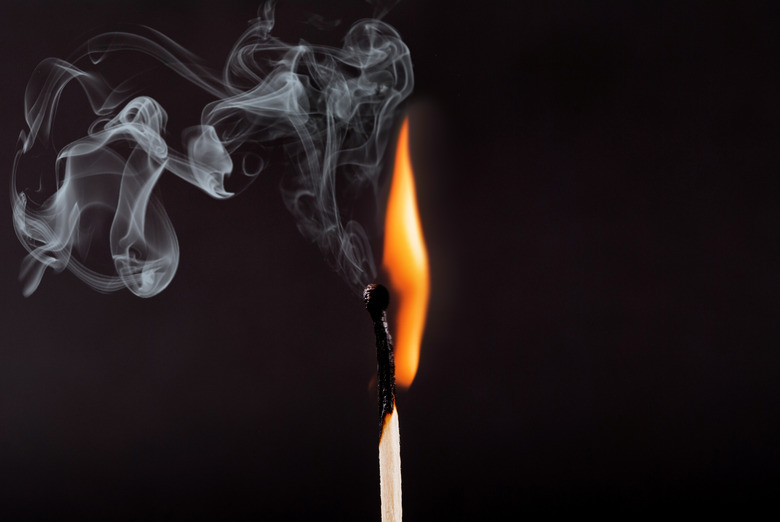What Happens To An Exothermic Reaction If The Temperature Is Increased?
Some chemical reactions — like burning wood or exploding TNT — release heat to their surroundings. Chemists call these exothermic reactions. Increasing the temperature affects an exothermic reaction in two different ways: by changing the rate of the reaction and by changing the balance between products and reactants at the end of the reaction.
TL;DR (Too Long; Didn't Read)
Generally speaking, your reaction will speed up because a higher temperature means more heat and energy in your system. However, in some cases, raising the temperature might shift equilibrium and prevent some of your reaction from occurring .
Reaction Rates
Reaction Rates
Nearly all reactions go faster as the temperature increases — exothermic reactions included. The reaction between oxygen in the air and the chemicals in the tip of a match, for example, is so slow at room temperature that nothing seems to happen. When you heat up the tip of the match by striking it against the striker strip on the box, however, the temperature increases and with it the rate of the reaction until it burns with a hot flame. In general, the more you increase the temperature of an exothermic reaction, the faster it will go.
Equilibrium
Equilibrium
Most chemical reactions can go both ways, meaning they can run forward and convert reactants into products or run in reverse and convert products into reactants. As the reaction runs forward, the reactants are gradually depleted while the products start to accumulate, so the forward reaction slows down while the reverse reaction speeds up. Eventually the rates of the forward and reverse reactions are the same, so although the reaction continues to occur, the amounts of products and reactants do not change. This steady state is called an equilibrium.
Le Chatelier's Principle
Le Chatelier's Principle
The ratio of reactants to products at equilibrium depends on the specific chemical reaction. For something like fire, for example, little if any of the reactant is left at equilibrium, whereas for something like the reaction between nitrogen and hydrogen to make ammonia, a lot of reactants may be left at equilibrium. Le Chatelier's principle basically says that all chemical systems want to get to and stay at equilibrium. If you add reaction products to a chemical system at equilibrium, you can expect that some amount of product will be converted into reactants, while if you add reactants, some amount of reactants will be converted into products so that equilibrium is maintained.
Heat and Equilibrium
Heat and Equilibrium
For an exothermic reaction, heat is essentially a product of the reaction. In keeping with Le Chatelier's principle, if you increase the temperature you are increasing the amount of products, and so you shift the balance at equilibrium back toward reactants, meaning there will be more reactants left at equilibrium. The higher the temperature goes, the further the balance at equilibrium shifts back toward reactants. A famous example is the reaction between hydrogen and nitrogen to make ammonia. The reaction is so slow at room temperature that nothing happens. If you increase the temperature to speed the reaction up, however, the balance at equilibrium shifts back towards reactants, and very little ammonia is produced.
References
- Chemical Principles, The Quest for Insight, Fourth Edition: pages 357-394 and 556, Peter Atkins and Loretta Jones
- Davidson College Department of Chemistry: Le Chatelier's Principle, Effect of a Change in Temperature
Cite This Article
MLA
Brennan, John. "What Happens To An Exothermic Reaction If The Temperature Is Increased?" sciencing.com, https://www.sciencing.com/happens-exothermic-reaction-temperature-increased-6971/. 30 April 2018.
APA
Brennan, John. (2018, April 30). What Happens To An Exothermic Reaction If The Temperature Is Increased?. sciencing.com. Retrieved from https://www.sciencing.com/happens-exothermic-reaction-temperature-increased-6971/
Chicago
Brennan, John. What Happens To An Exothermic Reaction If The Temperature Is Increased? last modified August 30, 2022. https://www.sciencing.com/happens-exothermic-reaction-temperature-increased-6971/
